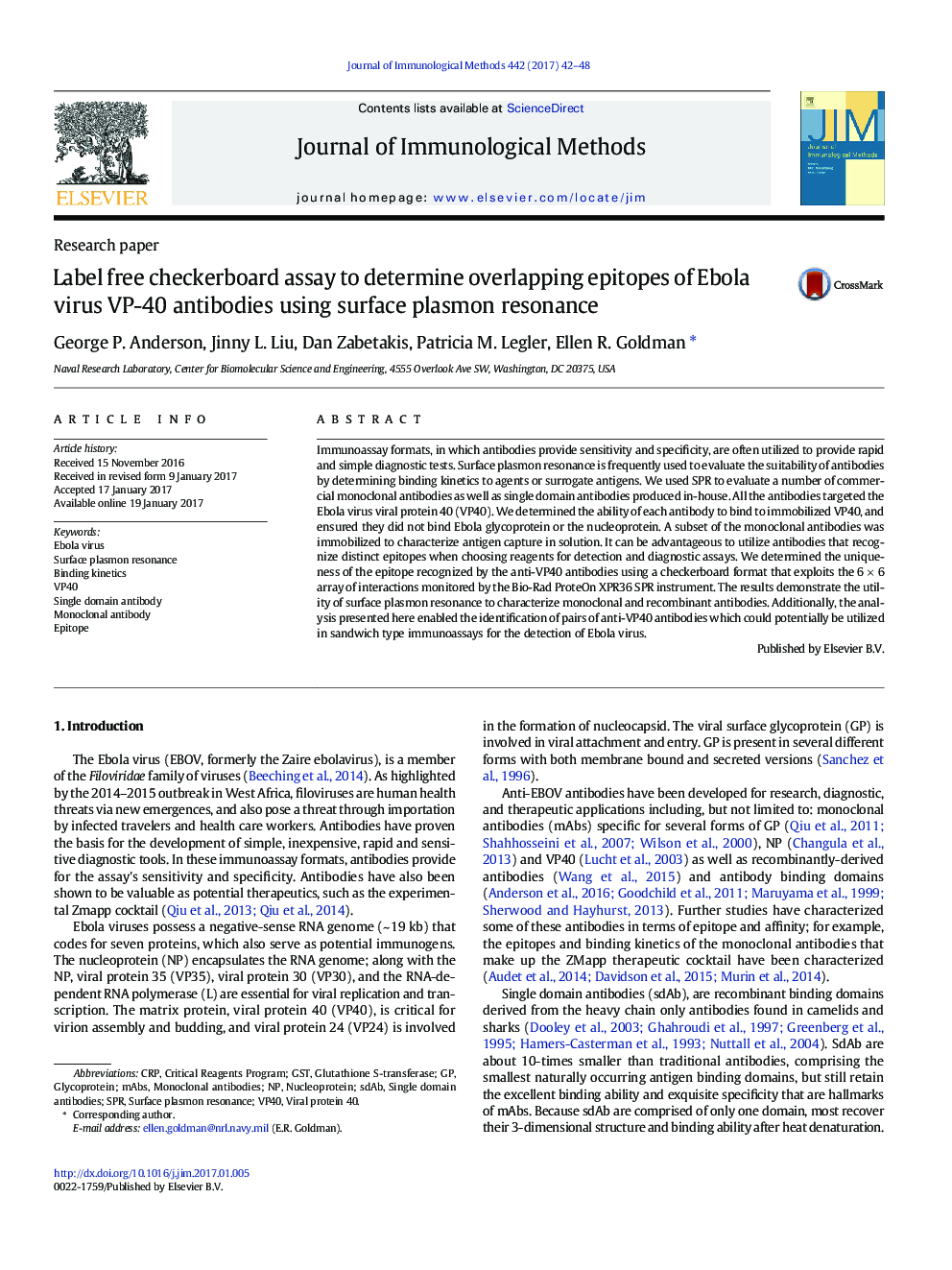| Article ID | Journal | Published Year | Pages | File Type |
|---|---|---|---|---|
| 5522044 | Journal of Immunological Methods | 2017 | 7 Pages |
â¢Single domain antibodies (sdAb) specific for VP40 from Ebola Virus were selected.â¢Monoclonal and sdAb were evaluated using surface plasmon resonance.â¢Monoclonal and sdAb had sub nM and nM dissociation constants respectively.â¢An array format facilitated evaluation of the epitopes recognized by the antibodies.
Immunoassay formats, in which antibodies provide sensitivity and specificity, are often utilized to provide rapid and simple diagnostic tests. Surface plasmon resonance is frequently used to evaluate the suitability of antibodies by determining binding kinetics to agents or surrogate antigens. We used SPR to evaluate a number of commercial monoclonal antibodies as well as single domain antibodies produced in-house. All the antibodies targeted the Ebola virus viral protein 40 (VP40). We determined the ability of each antibody to bind to immobilized VP40, and ensured they did not bind Ebola glycoprotein or the nucleoprotein. A subset of the monoclonal antibodies was immobilized to characterize antigen capture in solution. It can be advantageous to utilize antibodies that recognize distinct epitopes when choosing reagents for detection and diagnostic assays. We determined the uniqueness of the epitope recognized by the anti-VP40 antibodies using a checkerboard format that exploits the 6Â ÃÂ 6 array of interactions monitored by the Bio-Rad ProteOn XPR36 SPR instrument. The results demonstrate the utility of surface plasmon resonance to characterize monoclonal and recombinant antibodies. Additionally, the analysis presented here enabled the identification of pairs of anti-VP40 antibodies which could potentially be utilized in sandwich type immunoassays for the detection of Ebola virus.
